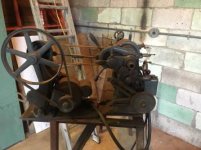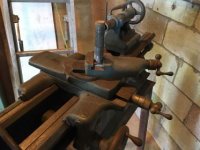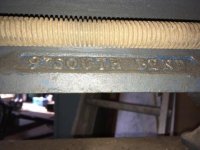Hello Everyone,
I've recently purchased a house with a shop and the previous owner left some goodies, one being an old 9'' Southbend lathe. I plan on doing a full restoration of this machine but wanted to get some information on it first. I've watched a bunch of videos on these lathes but haven't seen too many that look like mine. If anyone could share some information about this machine (year,model, restoration tips), it would be much appreciated. Thanks in advance.
I've recently purchased a house with a shop and the previous owner left some goodies, one being an old 9'' Southbend lathe. I plan on doing a full restoration of this machine but wanted to get some information on it first. I've watched a bunch of videos on these lathes but haven't seen too many that look like mine. If anyone could share some information about this machine (year,model, restoration tips), it would be much appreciated. Thanks in advance.







